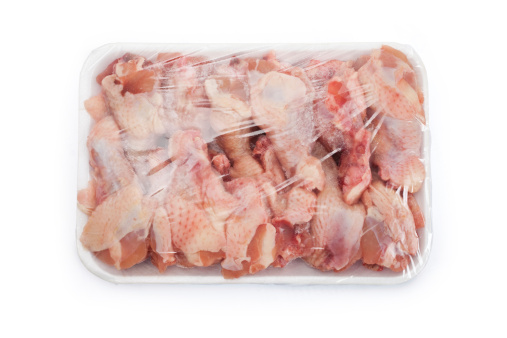Thawing food incorrectly is one common food safety mistake many people make. So if it’s dinnertime and tonight’s main ingredient is still frozen solid, what do you do? Run it under hot water? Stick it on the counter while you prep the other ingredients? Give up and call for delivery? Wrong, wrong and wrong. Because frozen food could warm up unevenly, allowing germs to grow, thawing food is a major food safety risk. Here are the right ways to thaw food safely.
Thaw in the Fridge
This method requires a little prior planning, as it usually takes about a day to thaw food in the fridge. But it is the safest way to thaw meat, poultry and seafood for the best quality. Simply put your frozen meat in a bowl or pan (to catch any leaks) and place it on the bottom shelf of your fridge. It will be ready to cook for dinner the next day. (Large items, like a whole turkey take longer. Plan for 24 hours for every 5 pounds of food.)
Thaw in Cold Water
So you forgot to thaw your meat yesterday, now what? You can stick it in a plastic bag and run cold water over it until thawed. You can also place it in a bowl of cold water, but you have to change the water every 30 minutes until it is ready to cook. If you use this method, you must cook the food immediately after thawing.
Thaw in the Microwave
We’re all pretty familiar with thawing in the microwave. Most of them have a defrost setting, based on how much the food weighs. This is faster and doesn’t waste any water. I recommend removing the packaging from food and using a microwave-safe container. If you use this method, you must cook the food immediately after thawing.
Don’t Thaw
For a lot of food, you can get away with not thawing at all. I never thaw frozen veggies before cooking, I toss them right in the pot from the bag. You can also cook thin meats still frozen, like fish fillets, boneless chicken breasts (less than an inch thick), or ground meat (keep stirring and breaking it up). Just remember that it will take 1.5 times longer to cook from frozen than if it were thawed.
Marinating Food
Similar to thawing, you should not marinate foods at room temperature. Just pop it in the fridge until you are ready to cook. (Remember to throw away the leftover marinade. It’s full of raw meat juices and the germs that go with it.)
Now that this all cleared up, what other food safety questions do you have?
You can find more info on thawing foods safely here:

